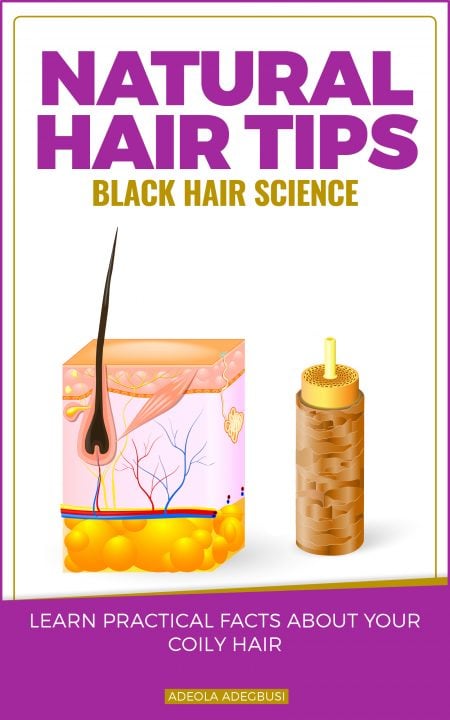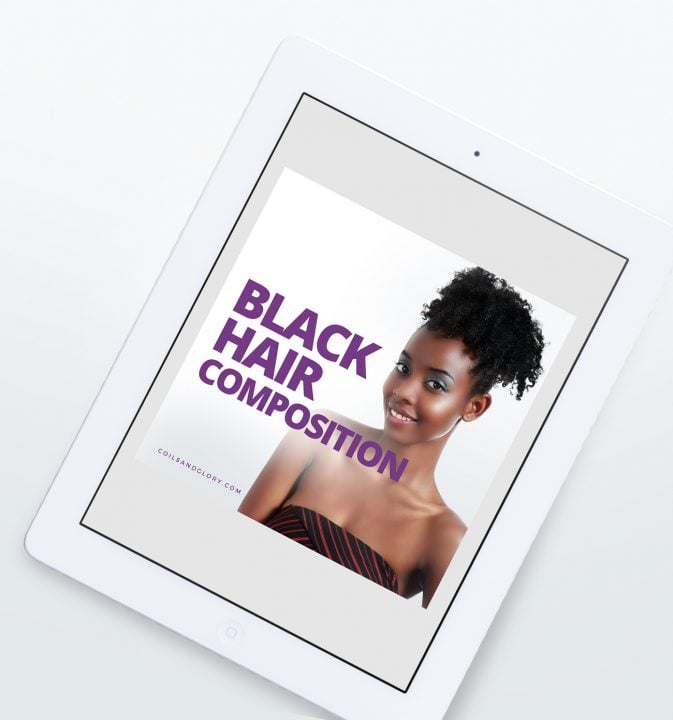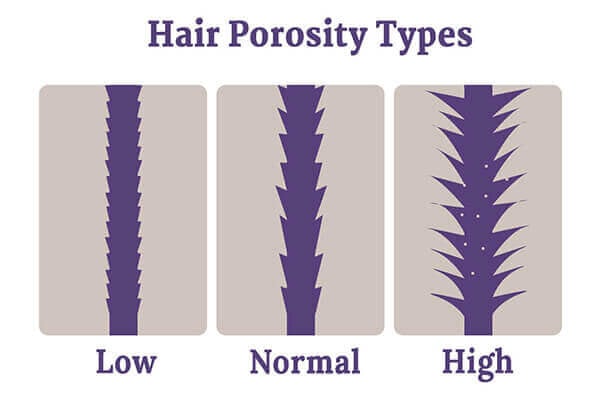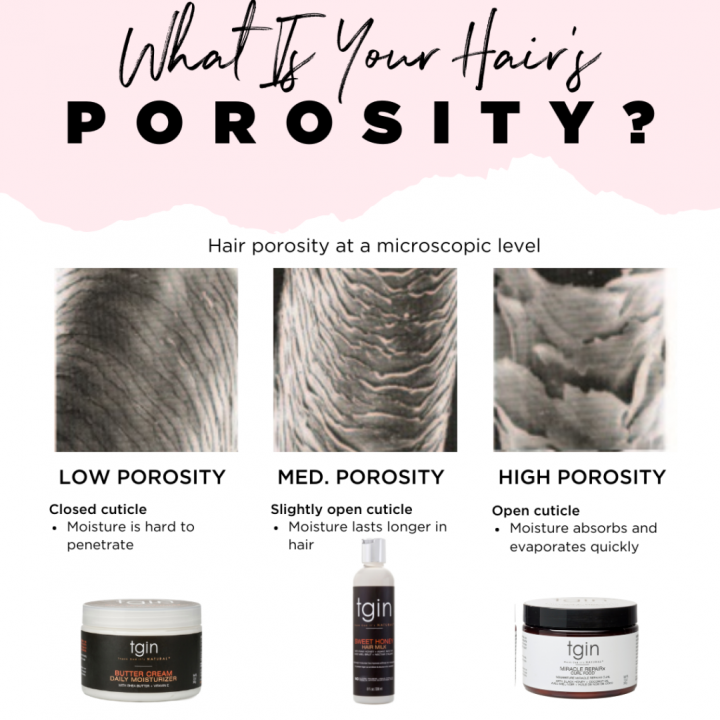If you have done the porosity test, then you know your hair porosity by now. The next step you need to know is how to take care of your hair porosity type. Every porosity has its own kind of care, and that is what you will be seeing next.
Characteristics of low porosity and how to care for it (hair regimen).
Many people think low porosity hair is in a disadvantaged position. This is not true. Low-porosity hair has its cuticles joined in such a way that it is not easy for moisture to penetrate your strands. Nonetheless, this is not a disadvantage. You need to know how to get the moisture in. Let’s look at some of the characteristics of this hair porosity.
- Products don’t penetrate the hair strands
- It is hard for water to saturate your strands
- It takes a long time for your hair to air dry
- Moisture lasts for a long time on the scalp
- Has product buildup easily
These signs further confirm that you have low porosity hair. This means that when taking care of your hair, you need to focus more on getting moisture into your strands. To penetrate your hair with moisture, include pre-poo, deep conditioners and heat caps. This is what the hair regimen of a low porosity hair should look like.

HAIR REGIMEN FOR LOW POROSITY
Low porosity hair does not accept products easily. So, if your hair is low porosity, you need to be particular about the products you use on your hair. Products that you use should be the right set for your hair. It might take a while though before you find the right everything for your hair. If you are lucky though, you will find products that your hair loves easily. The basic processes you should do for hair care are
PRE-POO: you do Pre-poo on the hair before wash day. As the name suggests, it is done before shampooing i.e., pre-shampoo. You can do pre-poo with oils, deep conditioners or already made pre-poo treatments. Pre-poo prevents shampoo from stripping the hair completely.
This is why it is important to do a pre-poo treatment as a low-porosity because it will lock the moisture in your hair in. If you are using oils, it is more preferable you use hot oils. You can get hot oils from your local beauty stores. You can also make your own penetrating oil hot by doing the double boiling method.
SHAMPOO: There are many good shampoos that you can use to cleanse your scalp as a low porosity. Low porosity hair always has a lot of buildups. Product buildup is something you want to avoid or at most get rid of from time to time.
You can shampoo your hair with clarifying shampoos to get rid of all buildup. Also, try not to apply shampoos on hair strands.
Let the lather running from your scalp cleanse your strands instead. Shampoos that you can check out include Neutrogena anti-residue shampoo, As I am Curl Clarity Shampoo, Mielle Organics Babassu Conditioning Shampoo, etc. Wash your hair regularly, as often as once in two weeks at most.
DEEP CONDITIONER: After washing your scalp with a shampoo, condition your strands. Conditioners are meant for the hair strands and not for the scalp. So, try to apply it to your hair strands only. If you had something to do after washing your hair, and your hair becomes dry a bit, hop into the shower to get it wet again.
Conditioners that are preferable for low-porosity hair must be lightweight. This is because the heavier the product is, the less it is likely to penetrate the scalp. When using deep conditioners, make use of heat caps too. This ensures that your hair strands get all the goodness from the conditioner and are penetrated by it.

Also, your conditioners should contain moisturizers like Aloe Vera, Shea butter, argan oil, coconut oil, etc. so they can sink deeply into your strands. There is also an issue with protein-based deep conditioners. You can check out conditioners like Shea Moisture Strengthen, Grow& Restore Treatment Masque, Eden Bodyworks Deep Conditioner, Shea Moisture Low Porosity Baobab and Tea Tree Oils Protein-Free Conditioner, etc.
MOISTURE: This is where you seal in the moisture for the day. Here, you use a lightweight leave-in conditioner like Shea Moisture Low Porosity Protein Free Leave-in Detangler. Then, you move on to seal with a hair butter or oil that your hair likes.
Ensure that the oil you are using is a light-penetrating oil. If you are using oil instead of butter, you might want to follow that with a cream. Please use a cream that doesn’t contain paraffin in it.
GREENHOUSE EFFECT: This is a deep moisture treatment method that you should have in your regimen. In the GHE treatment, you moisturize your hair and cover it with a shower cap for about 8-12 hours.
You can do this at night or even during the day. If you are doing the greenhouse effect on a day you are going to work, you can cover your shower cap with a fancy scarf. This will generate heat in your hair so that your cuticles open up to allow moisture to penetrate your strands.

Aside from a regular hair regimen, there are basic tips that every low-porosity hair should know. Some of those tips are:
- Look out for products that have natural humectants in them. They attract moisture from the air to your hair. Examples are Aloe Vera, Glycerin, Honey, etc. If a product contains humectants, grab it with both hands.
- Use heat always for conditioning and for treating your hair. Do you know how it is often said that heat can damage one’s hair? Well, not this kind. For low-porosity hair, using heat caps or doing the greenhouse effect from time to time can generate heat for the hair. This helps with the penetration of products into the cuticles.
- Low porosity hair does not take in every protein well. There are some kinds of protein that low porosity hair accepts. When using deep conditioners or protein treatments, use these. They are Hydrolyzed Protein, Silk Protein, and Wheat Protein.
- Don’t wait until your hair is dry to moisturize it. Moisturize your hair at least twice a week to keep it from being dry.
- Don’t use heavy oils or heavy products. Try grapeseed oil, olive oil, etc. If you must use coconut oil, do this when it is warm and while your cuticles are still open. This means that both the oil and your hair needs heat for coconut oil to penetrate your strands. Otherwise, it will sit on your hair and cause product buildup.
- Cover your hair every night to avoid losing all the moisture you’ve given to your hair




FACTORS THAT ALTER OR DETERMINE POROSITY LEVEL
It is generally believed that hair porosity is a result of genetics. Going by this, your hair porosity is determined by your genes. This is true. However, your hair porosity can be altered. Hair porosity change is caused by many things. These includes:
- Blow drying
- Bleaching
- Straightening
- Using harsh products like Relaxers
- Over-washing

IS 4C HAIR LOW OR HIGH POROSITY
If you have 4C hair, then you must have seen people with similar hair types. If that is the case, then the odds are that most people you’ve seen have low-porosity hair. You might have concluded that your hair is low porosity too. Your hair may be low porosity, but it is not determined by your hair type.
4C hair is resistant to products too. This is because of the curl pattern of the hair. So, while most 4C’s have Low Porosity hair, there are the few that have normal to high porosity.

CONCLUSION
Every hair has its own needs. This is what makes your hair journey unique and different from others. While it may look like every hair type goes through the same regimen, the kind of products used and the way products are used differs for every hair porosity type.





